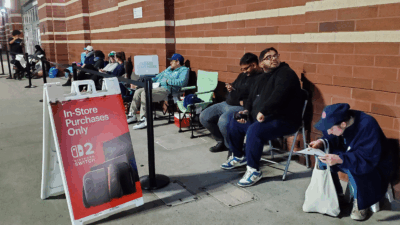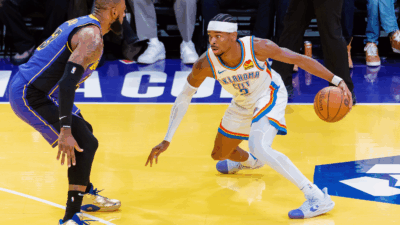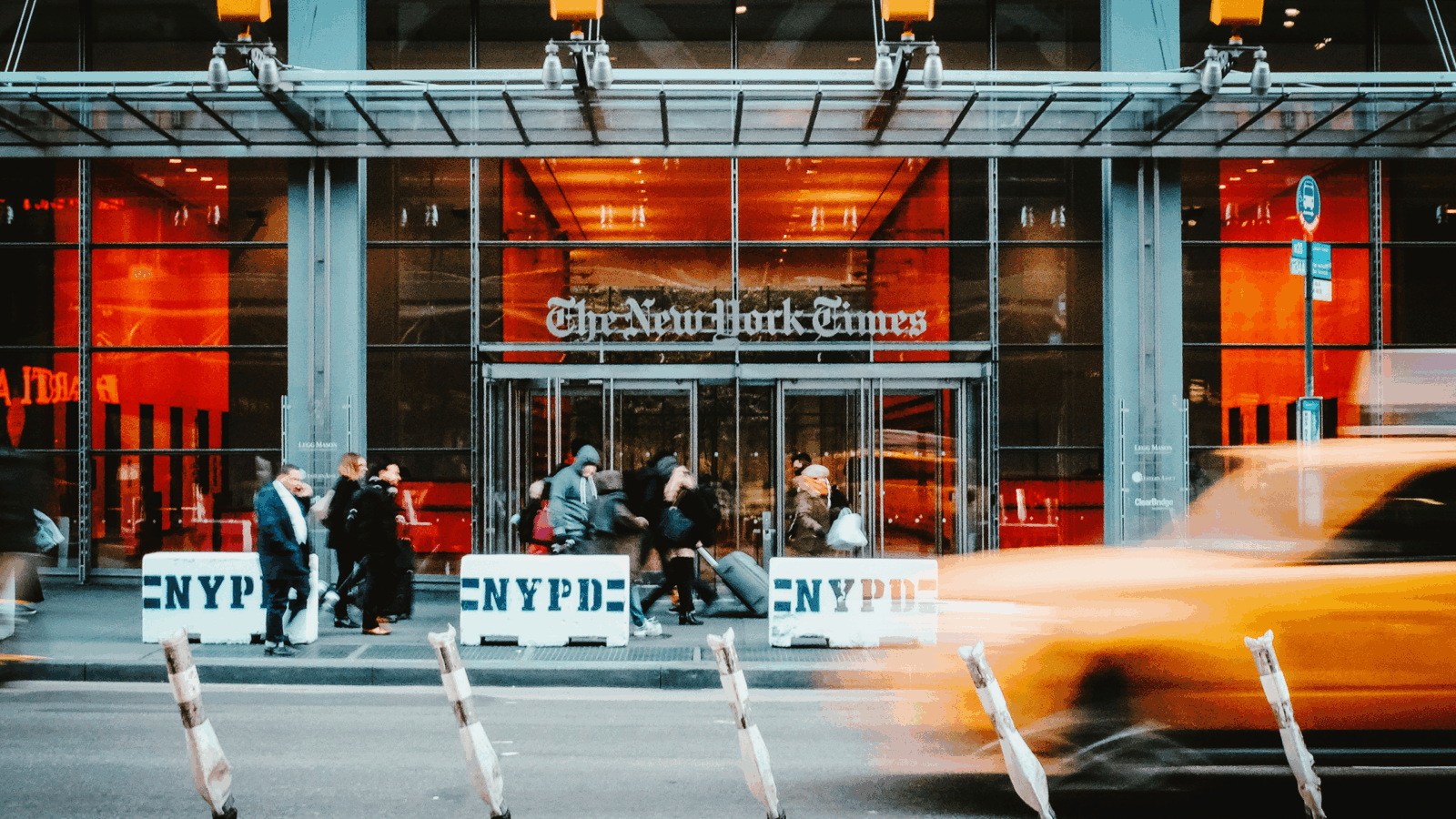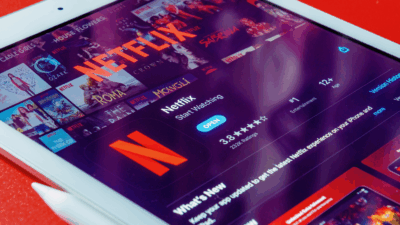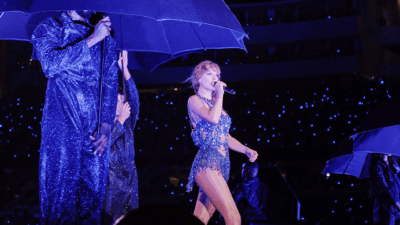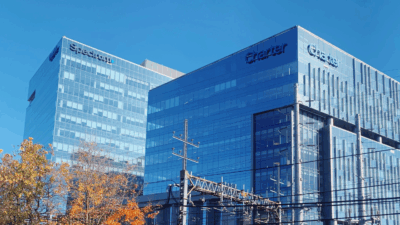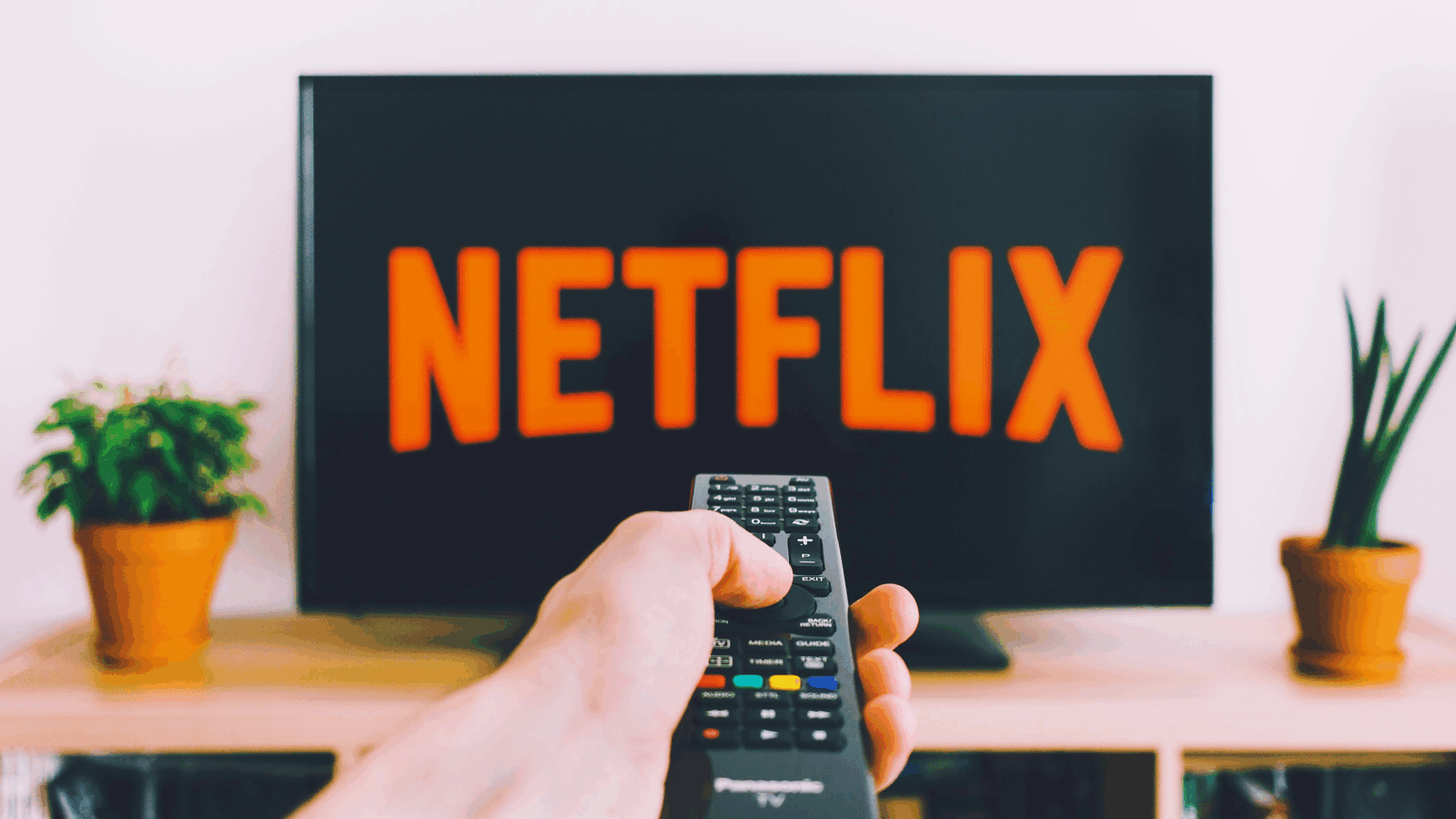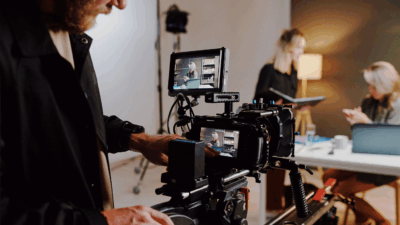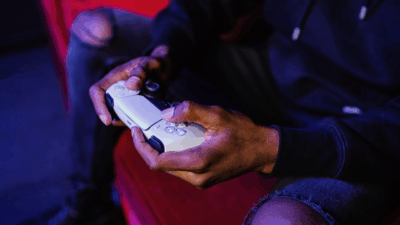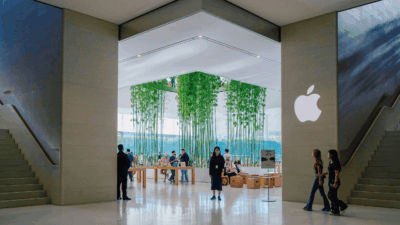Money Talks: The NCAA’s NIL Era is Already Evolving
This is the third school year of the NCAA’s NIL era, granting student-athletes the right to benefit from their Name, Image, and Likeness.
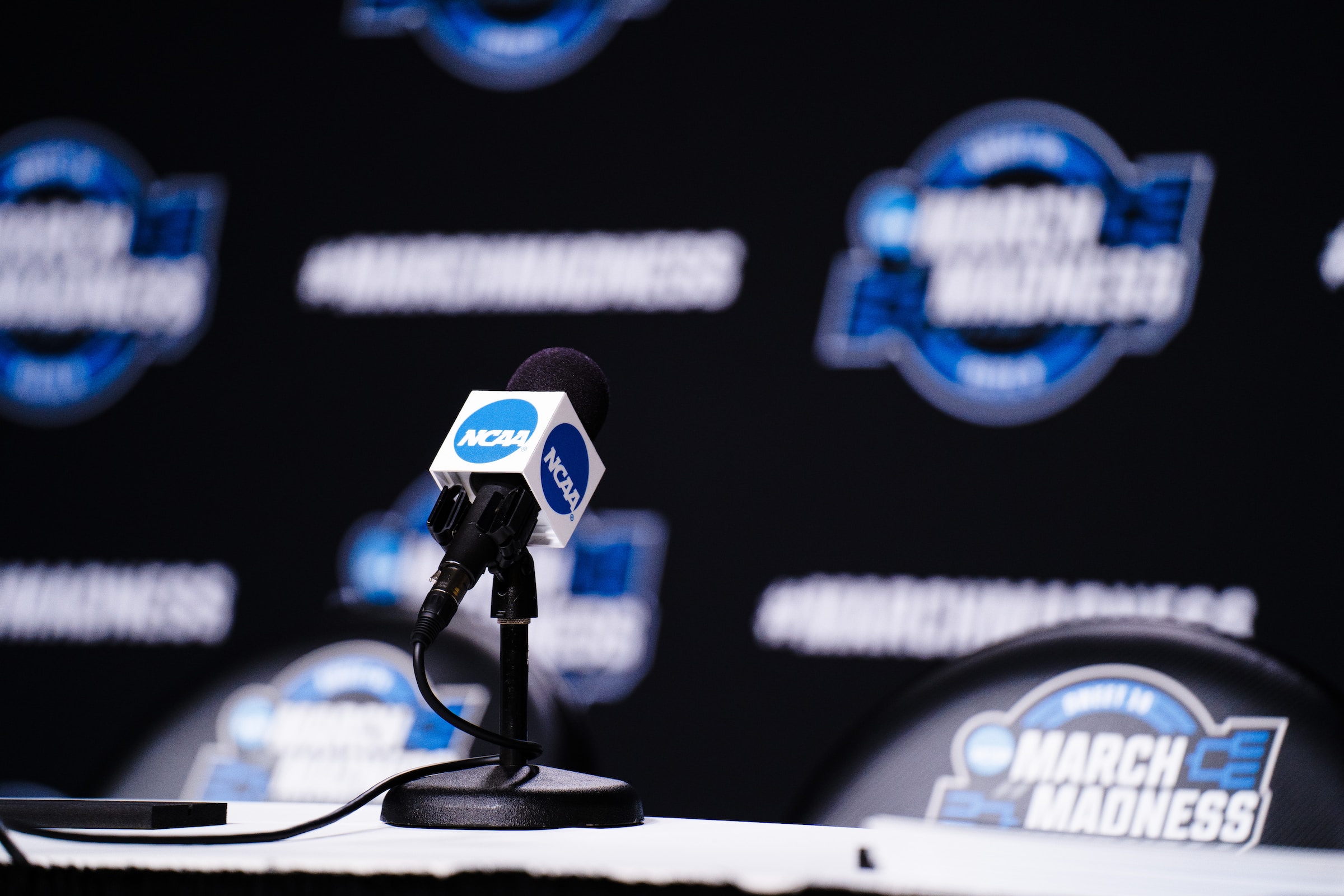
Sign up for smart news, insights, and analysis on the biggest financial stories of the day.
College basketball returns Monday, and players across the country will be lacing up for the love of the game — and a little bit more. This is the third school year of collegiate athletics’ NIL era, which granted student-athletes the right to financially benefit from their Name, Image, and Likeness, after generations of being unpaid amateurs while the NCAA system they played in morphed into a multibillion-dollar enterprise.
And the money has been pouring in. Last year, athletes made nearly $1.2 billion in deals, according to a study by NIL marketplace tracker Opendorse, an increase of about 11% from the year before. Keep in mind that’s compared with goose eggs pre-NIL.
But if the old ways were exploitative (and they were) the new ecosystem is shadowy and complicated, and it’s turning the world of high-level Division I college athletics on its head. Deep-pocketed alumni superfans, also known as boosters, have created complex organizations and nonprofits to effectively use as slush funds to attract the top athletes to play for their alma maters — a system further fueled by recent rule changes that allow student athletes to transfer schools over the summer without being subject to “redshirt” rules that had forced them to sit out entire seasons in the past.
In effect, college recruiting has veered closer to the free agency of professional sports, where the highest bidder often wins. Booster collectives and athletic departments are tethered in uneasy alliances, and athletes now blur the line between amateurs and professionals, and athletes and influencers.
But this new NIL era may be remembered as a short-lived period of unregulated mayhem — before a status quo can even be sorted out. The IRS is increasingly cracking down on booster organizing. Athlete rights advocates are pushing to get students an even bigger slice of the pie. Meanwhile, an existentially anxious NCAA hopes to codify its long-held norm of keeping its athletes officially amateurs.
Fast Break
After years of legal challenges and a blitz of state-level legislation, the NIL era officially began after a 2021 US Supreme Court case that upended the NCAA’s 115-year prohibition on such deals.
Even on a Supreme Court bench that’s arguably as divided as it’s ever been, letting athletes financially benefit from their role as all-important cogs in the NCAA’s multi-billion industry seemed perfectly clear. The court unanimously sided with the athletes, and in a searing concurring opinion, Justice Brett Kavanaugh stated what many athlete advocates had argued for decades: “Nowhere else in America can businesses get away with agreeing not to pay their workers a fair market rate on the theory that their product is defined by not paying their workers a fair market rate.”
The impact was almost immediate. Donor collectives sprouted like weeds, to a level where there are now more than 120 of them, according to a recent New York Times investigation, with at least one for every school in the five major college football conferences. The organizations are often established either as nonprofits or with charitable divisions, allowing boosters to make donations with tax-deductible status.
While the NIL system was initially designed to allow athletes to engage in no-brainer business deals, like getting paid for brand endorsements or for getting a cut of jersey sales, the collective money often flows freely. That’s allowed athletes to score some of the best bang-for-your-effort side hustles in America:
- The Swarm Collective, a group of University of Iowa superfans, pays recent transfer quarterback Cade McNamara $600 an hour for various community-oriented tasks, like delivering meals to seniors and making visits to children’s hospitals, the NYT reported. McNamara admitted the collective deal was a primary reason for transferring to the Hawkeyes.
- Many athletes, including Michigan State football players, are simply tasked with promoting their collective’s charity via social media, with a requirement often being one post a month. That’s allowed some athletes to make as much as $25,000 per post.
- In addition to other NIL money, the University of Utah’s Crimson Collective is granting every scholarship football player a new $61,000 Dodge truck — leased to each player, until they depart the program.
- The average starter at a major football program now makes about $103,000 a year, according to Opendorse, while the average men’s basketball player with a collective deal earns $37,000. Opendorse estimates that 80% of NIL money stems from collective deals.
While the NCAA technically has rules over who can officially recruit players on their schools’ behalf, there’s enough wiggle room for collectives to have an outsized impact. The University of Miami, which sent both its men’s and women’s basketball teams to the Final Four last season thanks in large part to transfers lured by collective-tied NIL opportunities, has become intertwined with the fate, whims, and cash of super-booster extraordinaire John Ruiz, a university alumni and founder of LifeWallet. To nearly everyone, the connection between the collectives’ cash and athlete recruitment has become explicit.
“We’ve got to be able to offer a package similar to those other places so that money does not become a factor,” Penn State head coach James Franklin said to boosters at a recent $2,000-a-ticket fundraiser, according to the NYT.
Already, the IRS is beginning to scrutinize alumni collectives, arguing that they stretch the very definition of nonprofits and charitable organizations.
Pay for Play: Still, it’s not just the IRS that’s skeptical of the new booster-dominated system.
While being sure to tip-toe around criticizing the NIL opportunities writ large, Alabama football head coach Nick Saban recently told Sports Illustrated that “Guys are going to school where they can make the most money. I don’t think that is even the best thing for the player,” adding that “the whole concept of collectives is what has created this environment that we are in, and I’m not sure that anybody really had the insight or the vision to see that was going to happen.” Five of Saban’s players rank among the top 100 most paid in all of college sports, according to data compiled by On3.com. Saban earns roughly $10 million a year as head coach.
Others are more explicit: “[The collective system is] a pay-for-play scheme disguised as NIL,” Big Ten Conference commissioner Tony Petitti said at a Senate hearing in October. “We are concerned that management of college athletics is shifting away from the universities to collectives.”
Touchback: If NIL is defined by an opaque system of shady backroom payments, the simple solution may just be to pay student-athletes directly as university employees. And that’s what some student advocates would like to see:
- The eggheads on the Dartmouth University men’s basketball team have filed a motion with the National Labor Relations Board to be classified as university employees, and thus be paid directly by the university (in addition to any outside NIL deals).
- The NLRB has also filed a complaint against the University of Southern California, the Pac-12, and the NCAA based on the idea that student-athletes in revenue-generating sports like basketball and football are fundamentally misclassified as non-university employees.
California Dreaming: Most onlookers look to two separate movements as the most likely to radically reshape athlete compensation once again.
The first is an antitrust lawsuit brought by three former NCAA Division I student-athletes, House v. NCAA, that aims to use the NIL ruling against the NCAA. Essentially, the plaintiffs argue that the games themselves are the most essential uses of players’ name, image, and likeness — opening the door to a more direct revenue-sharing model, where players would likely be classified as employees of their universities.
“What we’re going to be asking the court to do for the class is to strike down all current prohibitions on NIL. And so the most significant is the rule that prohibits conferences from paying students for NIL,” said Steve Berman, one of the lead plaintiffs’ attorneys.
The second is California’s College Athlete Protection Act, which passed the state assembly and would require its state universities to create a revenue-sharing system with student athletes. The law would establish a system in which schools would share with athletes revenue that exceeds its total revenue from the 2021-2022 school year.
In 2019, California signed the nation’s first legislation allowing athletes to sign NIL deals — despite threats from the NCAA that its schools would be excluded from competition if the legislation passed. Instead, other states drafted similar NIL bills, kicking off a chain of events that culminated in the 2021 Supreme Court ruling. If passed, California’s revenue-sharing model could similarly inspire a wave of imitators, ultimately leading to system-wide change.
Many athletic departments are already penciling in major changes, Casey Schwab, chief executive of college sports advisory firm Altius Sports Partners, told The Wall Street Journal. “This moment in time right now feels like the fall of 2020, nine months before NIL went live,” Schwab said. “We’re nine to 12 months away from that next moment of panic in college sports.”
Time-Out: Sharing revenue with athletes or classifying them as employees is not, to be clear, what the NCAA wants. When Petitti appeared before the Senate last month, it was the 10th such hearing that the NCAA has held with Washington politicians to attempt to codify their status quo — and, crucially, score an antitrust exemption protecting them from the many legal attacks.
A top NCAA talking point is that sharing revenue with athletes in big-money sports means there’s less funds to trickle down to sports that generate little revenue, such as swimming or tennis, which is typically funded in part by excess football and basketball cash. The organization also wants far more oversight and regulation on the collective groups they see impeding on the authority of their athletic departments.
But in an era of so-called college super-conferences, in which major schools realign their athletic affiliations often in search of bigger and better media rights deals — such as USC and UCLA joining the traditionally Midwest-centric Big Ten conference — many critics see hypocrisy in the NCAA’s arguments.
That new-look Big Ten saw its brand new, seven-year media rights deal worth more than $7 billion begin this season. The SEC, meanwhile, kicks off a $3 billion deal with ESPN next year. Meanwhile, the college football playoffs, long thought to be anathema to the very concept of collegiate competition, is expanding to 12 teams next season, following roughly a decade of a four-team tournament. In other words, the NCAA has happily enjoyed the financial benefits of operating increasingly like a regular professional sports league.
“The dollars that have flowed into our space are real,” Nebraska athletic director and former Nebraska football star Trev Alberts told ESPN.com. “I’m not opposed to student-athletes participating in the sharing of ultimately what they’re helping to generate… Change is hard, but… I’d rather get busy changing than slowly dying a death by 1,000 cuts.”

